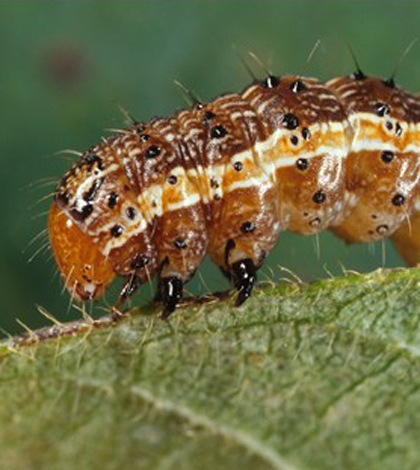Study finds fall armyworm’s secret to eating toxic plants

The fall armyworm, Spodoptera frugiperda. (Credit: Canadian Biodiversity Information Facility)
Maize and other plants use toxins to repel insects and worms. But by monitoring a specific chemical inside a fall armyworm, researchers at the Max Plank Institute for Chemical Ecology discovered that the worm’s gut can chemically mask a maize toxin by adding a sugar to its structure, making the plant edible.
Maize contains benzoxazinoid toxin, stored in the plant in a less reactive form masked with a sugar, beta-D-glucose. When a predator chews, the molecule is split, and the toxic benzoxazinoid released.
Not so for the fall armyworm, however. Its gut contains an enzyme that reattaches the sugar. Researchers used liquid chromatography/mass spectrometry to track the active toxin, showing how the armyworm’s gut was able to deplete the toxin over time.
Image: The fall armyworm, Spodoptera frugiperda. (Credit: Canadian Biodiversity Information Facility)




0 comments